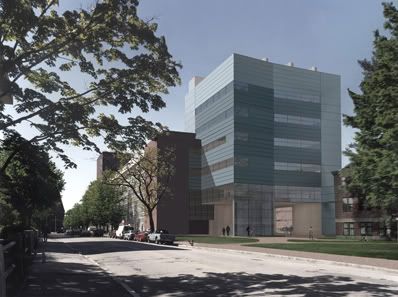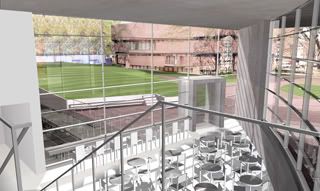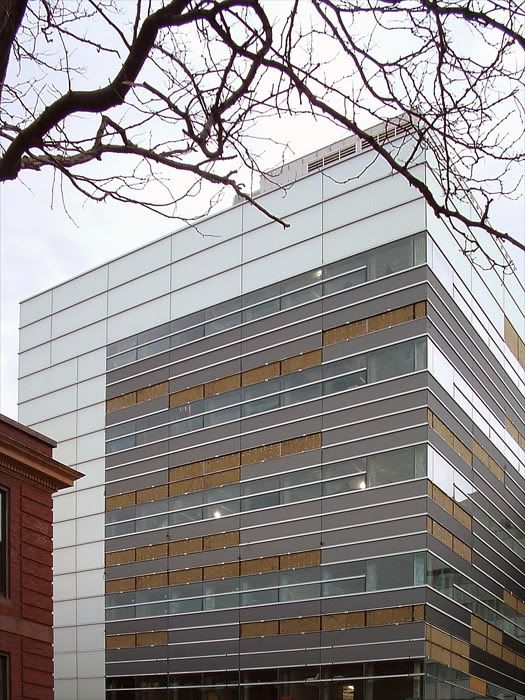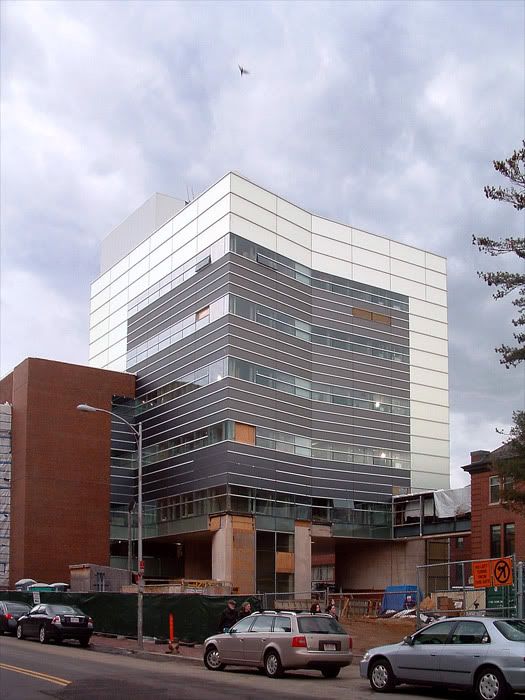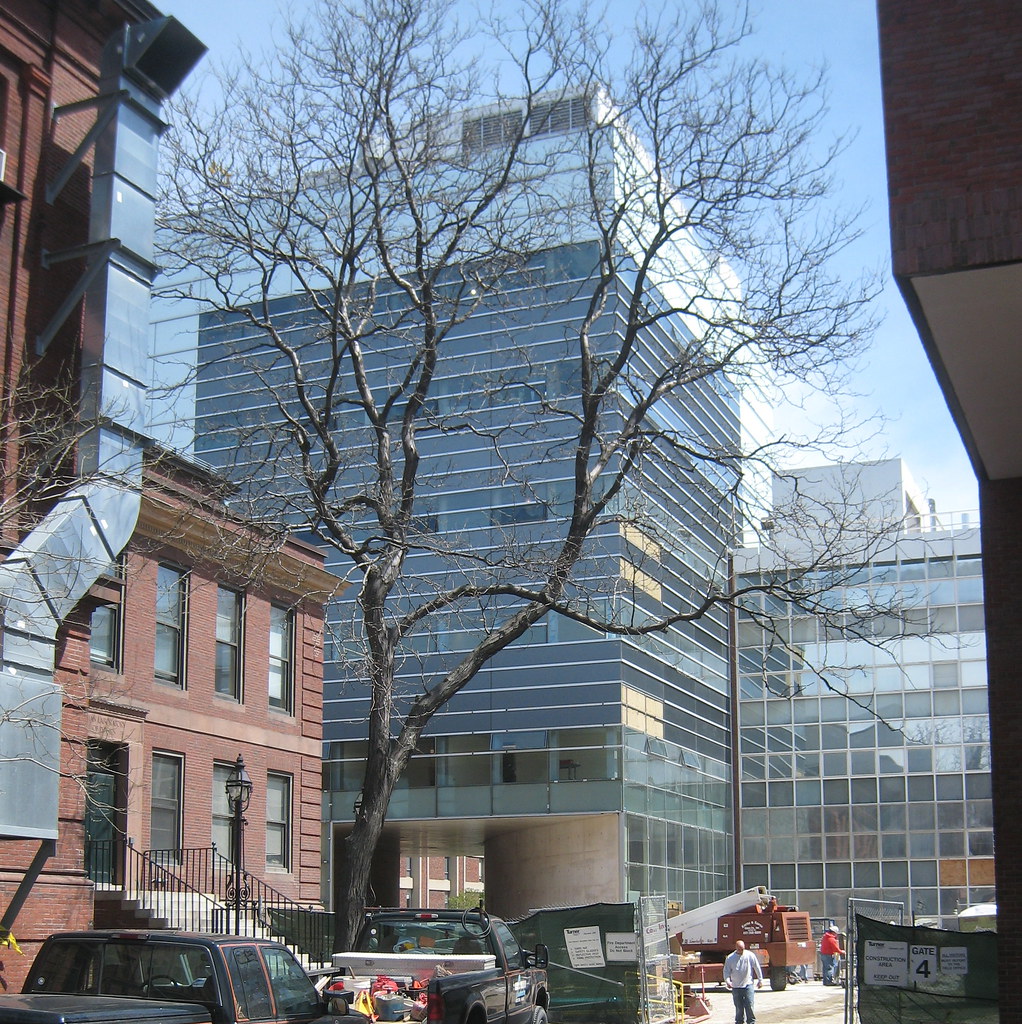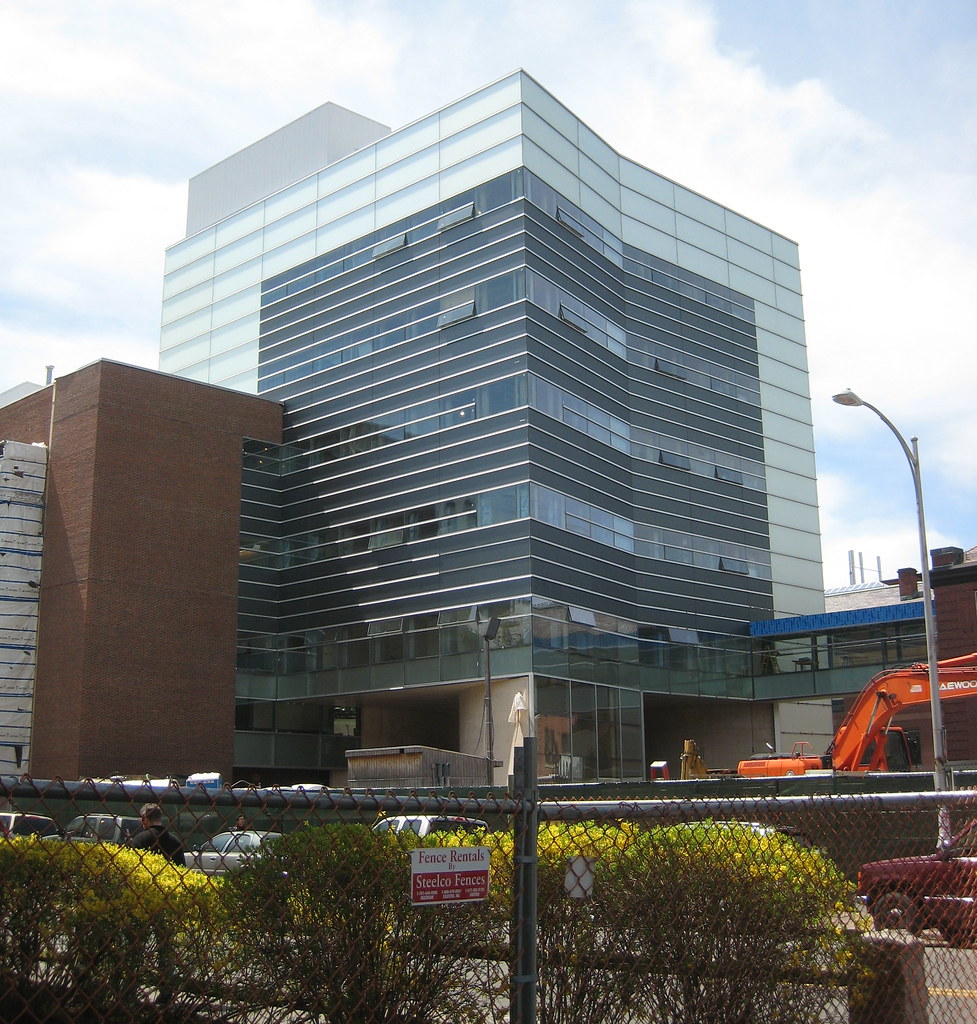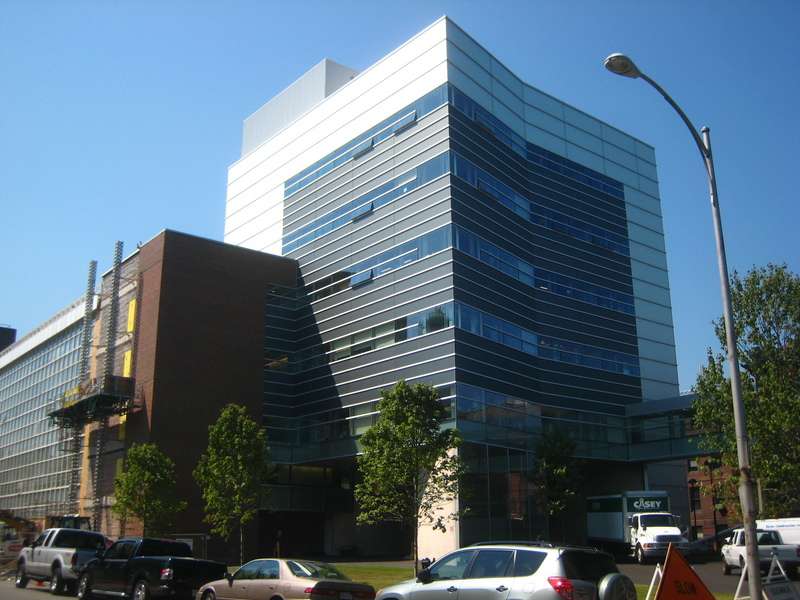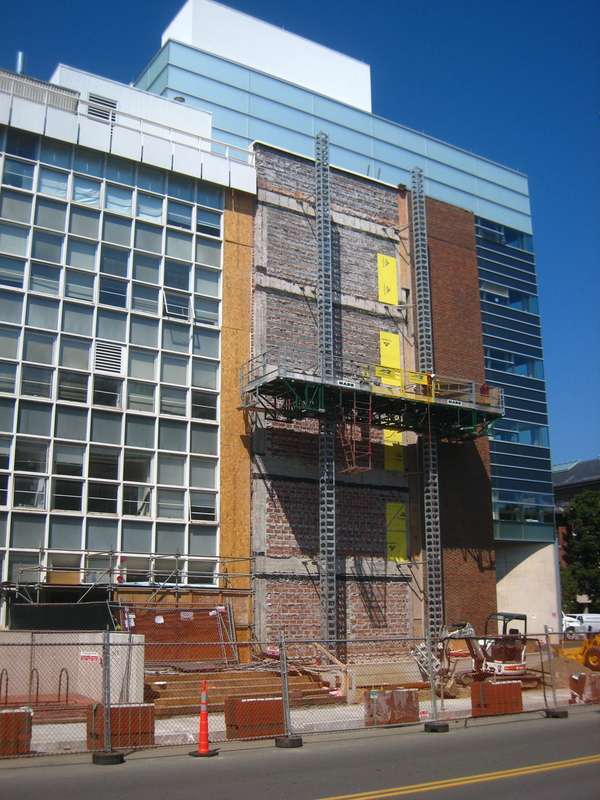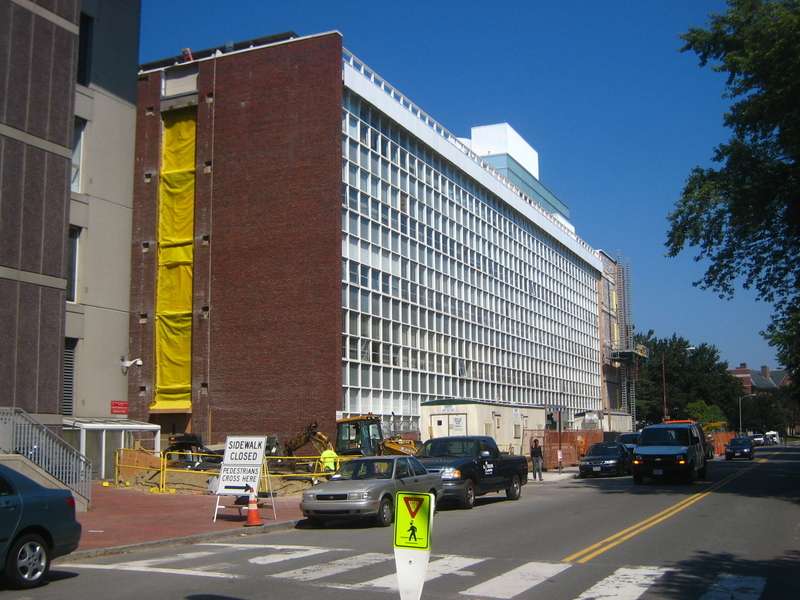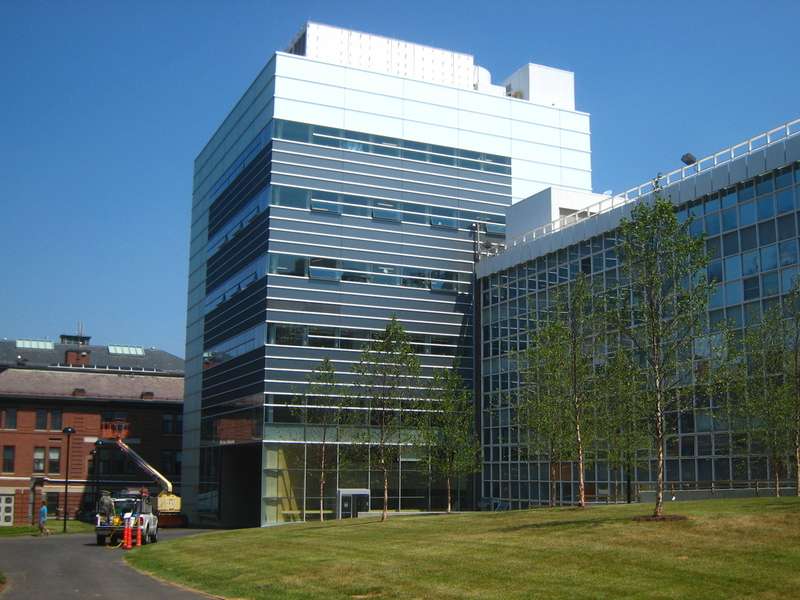A Big Lab for Small Science
Harvard?s nanotechnology research finds new home in $155 million building
Published On 11/29/2007 1:53:40 AM
By NAN NI
Crimson Staff Writer
.....
Construction was finally completed earlier this month on the colossal [????} Oxford Street building that houses the science of the very small. By attracting accomplished scientists like Yacoby and fostering collaboration between the sciences, administrators hope that LISE will bring Harvard to the forefront of nanotechnology research.
But scientific preeminence does not come cheaply, and with its $155 million price tag, LISE is no exception. In its planning stages, the project drew criticism for contributing to a projected budget deficit in the Faculty of Arts and Sciences (FAS), and the University has still not secured a primary donor to help pay for the building.
?It is a lot harder to raise money for a building that has already been built,? former Dean of the College Harry R. Lewis ?68 told The Crimson last year.
Though the project was also criticized for siphoning funds away from development in the humanities, science professors across the University have said that the building and other ambitious capital projects are necessary if Harvard wants to retain its position as a premier research institute.
Situated at the center of Harvard?s scientific campus in Cambridge, the LISE building lies mostly underground, with a wall of glass that allows natural light to permeate the lower floors. In order to maintain the original walkways in the area, the upper portion of the building rests atop three enormous columns. LISE also preserves the lawn of the Music Building, under which now lies the cleanroom?an advanced, temperature-controlled dust-free environment that is one of the building?s most important scientific resources.
Since dust particles are often several time larger than the devices that nanoscientists create, and temperature difference of a fraction of a degree can decrease the precision of an imaging device, LISE?s heavily-filtered 10,000-square foot cleanroom has less than 1,000 particles of dust per cubic foot. A typical urban environment has millions of particles per cubic foot.
Because nanoscale imaging is also very sensitive to vibration, the building incorporates special architecture that isolates the imaging labs from local disturbances, such as the T rumbling underground.
The building seeks to integrate the work of numerous labs by providing open spaces that facilitate the exchange of ideas. The aroma of Peet?s Coffee from the well-stocked caf? permeates the building, and there are sunlit collaboration areas on the upper floors.
....
Former Dean of the Faculty Jeremy R. Knowles praised LISE?s design, which was done by renowned Spanish architect and Graduate School of Design professor Rafael Moneo. The design integrates the edifice into the surrounding structures, although Knowles acknowledged that constructing the nanotechnology building in an urban environment added considerably to expenses.
?Because of the architect?s imaginative thinking, the cost was up,? said Knowles, who was involved in the nascent stages of FAS? $740 building boom that included LISE. ?But the only way we can go forward in science is to establish these facilities centrally.?
The total construction cost for LISE looms around $155 million, slightly more than the original projected cost of $152 million, according to FAS Director of Capital Projects Stephen L. Needham.
LISE is the second building completed as part of a broader North Yard science complex, which also includes the Biological Research Infrastructure and the Northwest Science Building.
Knowles announced in 1999 that FAS would invest $200 million to emerging interdisciplinary sciences including nanotechnology and genomics, funds that contributed significantly to the construction of the LISE building.
Defending the decision to go ahead with the project before securing a major donor, Assistant Dean of Campus Design and Planning Nazneen P. Cooper said that the urgency of creating a state-of-the-art space for nanoscience trumped other considerations.
?In general, when we have a project that we have a need for, we will build it whether we have a donor or not,? Cooper said. ?In this case, we had a need for the laboratories and cleanroom.?
According to Martin, most elite research schools?including MIT, Stanford, and Cornell?have such a cleanroom, and in some ways, Harvard is a latecomer to the nanotechnology game, although the LISE building should make up for that shortcoming.
?Our LISE cleanroom can be described as being in the top tier of university clean rooms,? Martin said. ?If cleanrooms were an NCAA facility, ours is definitely Division I.?
But Michael J. Skvarla, the NanoScale Science and Technology Facility Program Manager at Cornell, said that evaluating facilities across schools is like ?comparing apples and oranges.?
?We?re happy that Harvard has its own facilities now, and we look forward to seeing them develop their own area of expertise,? Skvarla said.
As the home of Harvard?s Center for Nanoscale Systems, LISE also plays host to scientists from other schools through a grant from the National Science Foundation. The technical director for the center, Eric Martin, estimated that about 20 non-Harvard researchers use the LISE facilities at any given time.
In addition to maintaining Harvard?s edge as a research institution, Marcus said that the LISE building is also necessary to maintain the quality of education at Harvard.
?The LISE building was expensive because science is expensive,? he says. ?If you want to play the big leagues in experimental research, you?ve got to pay to play.?
........
